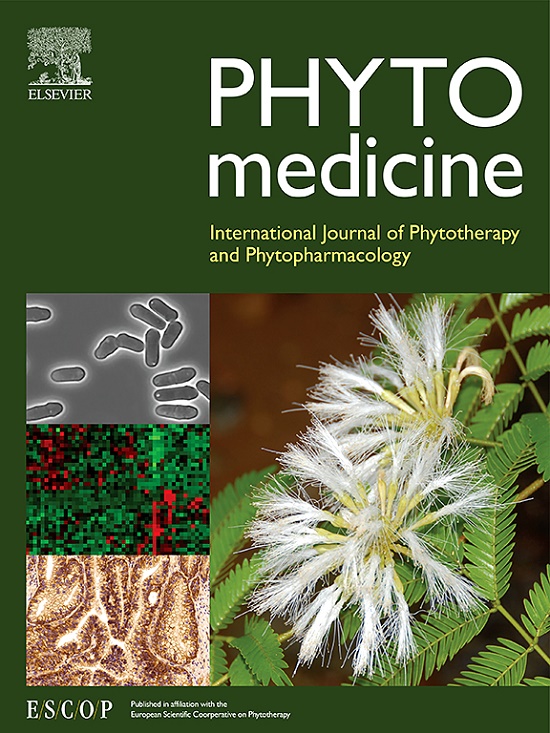桂枝伏苓汤通过抑制多发性骨髓瘤外泌体 ERK1 防止骨破坏
IF 6.7
1区 医学
Q1 CHEMISTRY, MEDICINAL
引用次数: 0
摘要
本文章由计算机程序翻译,如有差异,请以英文原文为准。

Guizhi Fuling decoction protects against bone destruction via suppressing exosomal ERK1 in multiple myeloma
Background
Myeloma-related bone disease (MBD) is a common complication of multiple myeloma (MM) that deteriorates patients' quality of life and affects overall survival. Modulating the interaction between myeloma cells and the bone marrow microenvironment may offer therapeutic potential. While certain natural medicines may regulate bone homeostasis by directly targeting osteoclasts or osteoblasts, few studies have explored the effects of intervening in myeloma cells on osteoclasts, particularly through the role of exosomes.
Purpose
To investigate the inhibitory effect of Guizhi Fuling Decoction (GZFL) on bone lesions formation induced by exosomes secreted by myeloma cells and provide evidence to support the clinical application of GZFL in treating MBD.
Methods
TRAP staining and Von Kossa staining were used to evaluate the inhibition of GZFL on RANKL-induced osteoclastogenesis in vitro. Micro-CT and bone histomorphometric analyses were performed to identify the protective effect of GZFL on bone destruction in vivo. RNA immunoprecipitation (RIP), RNA-seq, and UHPLC-MS/MS were conducted to investigate the MBD targets of GZFL. A clinical trial was carried out to evaluate the efficacy of GZFL capsules in the treatment of MBD.
Results
The main bioactive components of GZFL, paeoniflorin, quercitrin and kaempferol, could target ERK1 and downregulate its expression in MM exosomes. In vitro, GZFL treatment inhibited the promoting effect of MM exosomes on osteoclast (OC) formation, bone resorption, and activated ERK1 expression. In vivo, GZFL prolonged survival rate, inhibited the exacerbation of bone lesions caused by MM exosomes and RANKL-induced ERK1 activation in mice model. Clinical data showed that GZFL capsule combined with bortezomib (Bortezomib) and dexamethasone (PD) significantly reduced the numeric rating scale, as well as the expression levels of ERK and RANKL in bone marrow. ERK1 levels exhibited a positive correlation with both the number of bone lesions and RANKL levels. Higher ERK1 expression indicated a worse prognosis.
Conclusion
GZFL inhibited MBD progression by reducing MM-derived exosomal ERK1, thereby suppressing RANKL-induced ERK1 activation and the downstream OC formation. GZFL combined with PD regimen had good clinical efficacy and safety in the treatment of MBD.
求助全文
通过发布文献求助,成功后即可免费获取论文全文。
去求助
来源期刊

Phytomedicine
医学-药学
CiteScore
10.30
自引率
5.10%
发文量
670
审稿时长
91 days
期刊介绍:
Phytomedicine is a therapy-oriented journal that publishes innovative studies on the efficacy, safety, quality, and mechanisms of action of specified plant extracts, phytopharmaceuticals, and their isolated constituents. This includes clinical, pharmacological, pharmacokinetic, and toxicological studies of herbal medicinal products, preparations, and purified compounds with defined and consistent quality, ensuring reproducible pharmacological activity. Founded in 1994, Phytomedicine aims to focus and stimulate research in this field and establish internationally accepted scientific standards for pharmacological studies, proof of clinical efficacy, and safety of phytomedicines.
 求助内容:
求助内容: 应助结果提醒方式:
应助结果提醒方式:


